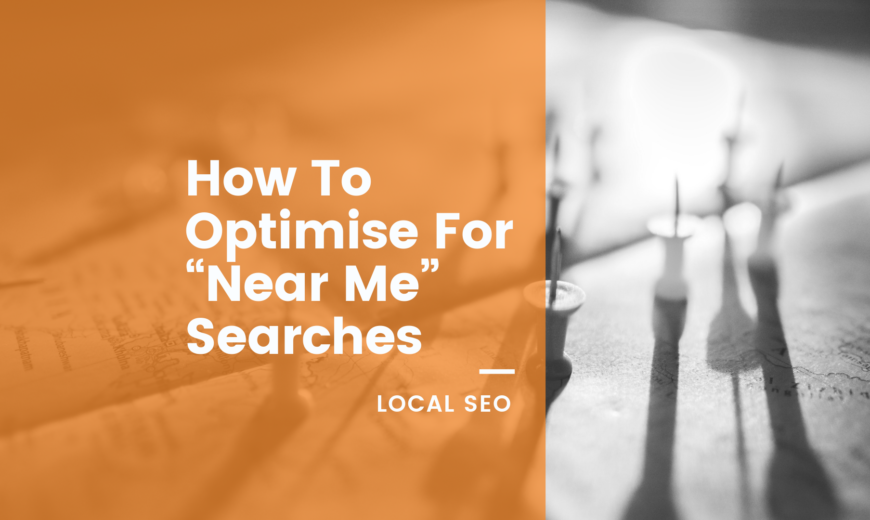
The “near me” search phenomenon greatly impacted the search engine landscape. In recent years, there has been significant growth in that particular search. Therefore results in an increase in “near me” suggestions in searches. This comes as a result of changing online search behaviour. Businesses need to modify their strategies along with the local search trends if they do not want to be left behind.
Why Local SEO for “Near Me” Searches?
Search trends and user behaviours are two major factors that command strategies in search engine optimisation. For example, when mobile phones started to dominate users’ search queries, businesses implemented mobile optimisations. The benefits are enormous and optimising a website for mobile use (with the introduction of mobile-first indexing) has even become the new standard.
As for local SEO, the reasons are the same. A study published by Moz shows that “near me” optimisation results in more clicks and engagement. In fact, it only makes sense that if you want people to find you, you must be compatible with the devices and channels they are using to do so.
Benefits of Optimising for Local Search include:
- A steady increase in engagement
- A considerable increase in click-through rate
- Pairs well with Google Map searches
- More exposure is given to the brand or business
Finally, the effects of Local Search Optimisation follow the well-known goals of SEM, SEO, SMM, SMO, and others.
How to Optimise for Local Search
If you wish to succeed in local search, you need to optimise your “near me” search terms. Whilst the exact Google algorithm remains a mystery for all. There are still general steps you can follow to help identify the right ways to optimise for “near me” searches. Here are some of the steps:
1. Update your Google My Business page listing
To be visible in Google Search, you need to list your business on Google My Business (GMB) and ensure that your listing is updated with all the correct information. Keep in mind to include the following:
- A profile image (do not use stock photos)
- A display business name that matches the listed name
- A URL that does not get redirected
- The exact address of your business
- The right contact information (phone number, email address, etc.)
- Omit legal terms such as Inc. or Pty Ltd
- Not to capitalise all characters
- Do not to include PO box and mailbox ID number
- Not to list any 800 number but use a local number
- Verify your listing by Google
- Aim to receive a minimum of five Google reviews
It is important to ensure that the information seen on your Google My Business listing is consistent across all the pages of your website and other listings. This makes it easier for Google to pick up the most accurate information about your business.
2. Ensure that customer feedback and reviews are visible
Customer reviews are one of the most impactful factors in “near me” searches. Having good ratings and reviews visible in Google Search and Google Maps, make it enticing for searchers to click on your links and follow through. Moreover, responding to these reviews is another way to get closer to your customers and rank higher in local searches. Hence, make sure to respond to reviews appropriately.
Having good reviews coming from other directories or websites such as Yelp, you can use the Schema markup tool to show Search Engine Results Pages (SERPs) that you have non-Google reviews.
For more information and tips on the 2019 Google My Business updates and how to optimise it for local SEO and how to deal with negative and fake Google reviews, please follow the links to our blog posts.
3. Feature events and more using schema
You can also use Schema to feature events, products, creative work, organisation, person and places, amongst others, to provide viewers additional information straight from the local search result page. Schema markup helps you build better credibility for your business. Additionally making sure your events are highly recommended for location-based search queries such as “events near me”.
4. Optimise photos for local search
To optimise your photos for local search, you need to make sure that the location is included. Not forgetting the text description of the photos but also in the file name and tags (ALT tags) of each photograph.
5. Be mobile-friendly
The number of mobile search users is increasing. Any website that is not mobile friendly easily gets pushed down to the bottom and receives fewer and fewer clicks. Keep in mind that most “near me” searches are coming from mobile devices. Not being compatible with mobile devices gives you a considerable disadvantage. For better current and future results, it is crucial to make your website responsive to all tablet, phone, and computer devices.
6. Add landing pages for every location
Businesses with multiple locations, make sure to add a page landing for each of your locations. This is especially needed for those who have a considerable number of locations and cannot easily list them all in the pages’ footer, without it being cluttered. Although Google is able to figure out the exact locations based on your listing. It will not hurt to go the extra mile and make it easier for Google and visitors to find your different locations.
Optimising for “near me” searches is essential if you want your business to survive the stiff competition in local searches. Taking the time to follow the steps mentioned above may not necessarily make you overtake all your competitors in SERPs, but it will surely help you be ahead of the “near me” local search optimisation.



